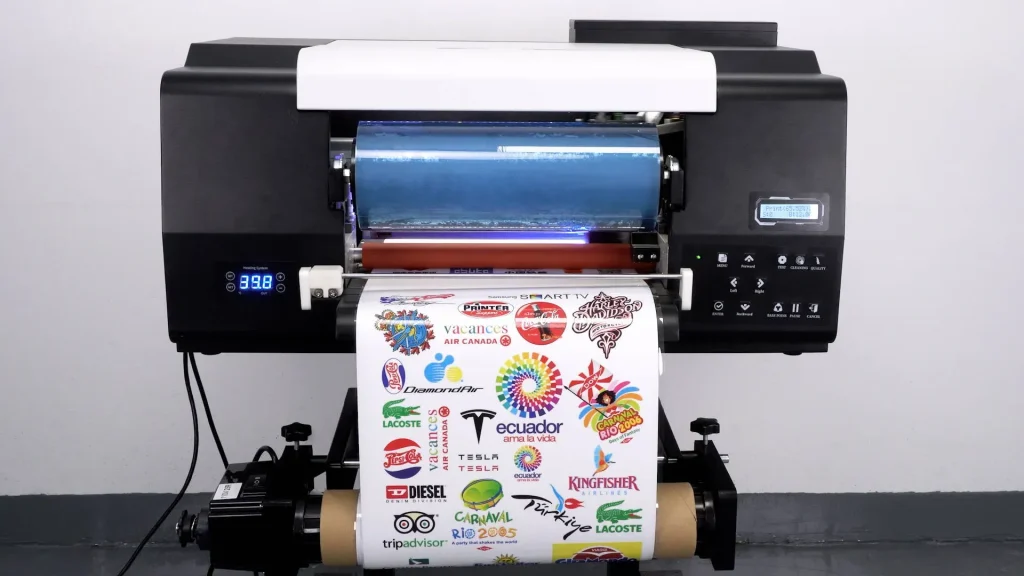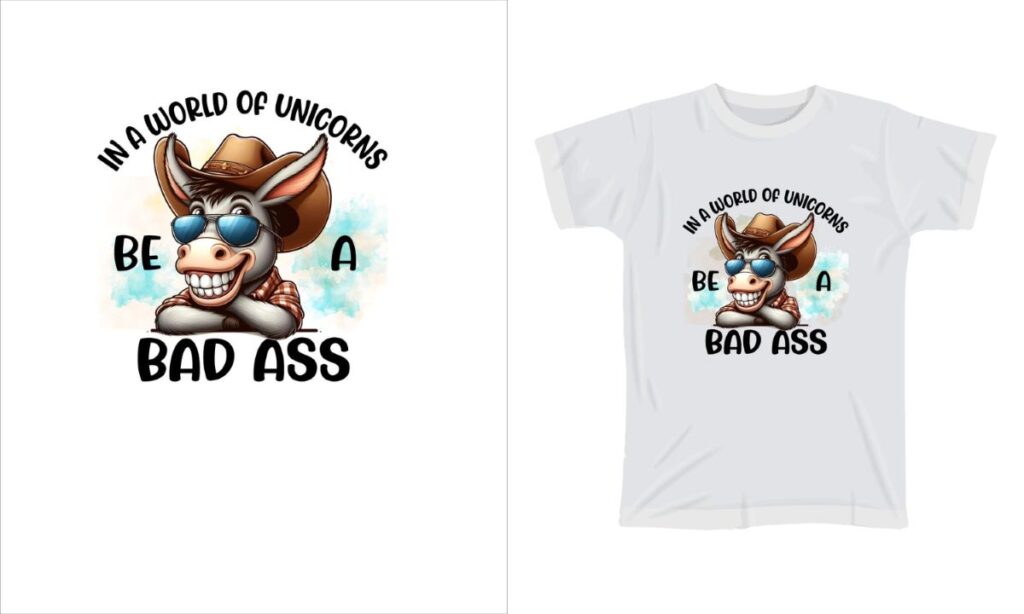UV DTF, or UV Direct-to-Film printing, is revolutionizing the world of vibrant print technology, offering unmatched precision and color vibrancy. By harnessing the power of UV printing, this innovative method allows for exceptional detailing and a rich palette of colors that truly stand out on a variety of surfaces. As industries increasingly lean towards modern printing solutions, UV DTF emerges as a frontrunner due to its efficiency and versatility. This groundbreaking approach not only enhances the visual appeal of products but also contributes to sustainable printing practices by utilizing inks with reduced environmental impact. Join us as we explore the remarkable benefits and applications of UV DTF, redefining what is possible in custom printing solutions.
UV Direct-to-Film printing, often referred to as UV transfer technology, represents a significant advancement in the field of digital printing. This method integrates the benefits of ultraviolet curing with direct film application, paving the way for applications on numerous substrates while maintaining high-resolution outputs. With a focus on vibrant and sustainable print solutions, this technology caters to the diverse needs of modern manufacturers and artists alike. By leveraging efficient curing processes, printers can create customized designs with striking colors and durability, making it a popular choice for those seeking quality and creativity. As we delve deeper into this topic, it’s essential to recognize the impact UV DTF has on the landscape of professional printing.
Understanding the Advantages of UV DTF Printing
UV DTF printing introduces a remarkable advantage in producing high-quality prints with exceptional durability. Unlike traditional printing methods that often result in fading or wear over time, UV DTF technology utilizes ultraviolet light to cure inks instantly, ensuring that colors remain vibrant even under challenging environmental conditions. This quick curing process plays a crucial role in maintaining the integrity of the prints, making them ideal for both indoor and outdoor applications. With the capacity to withstand extreme moisture, heat, and sunlight, UV DTF prints cater to a variety of industries, from fashion to industrial labels, ensuring long-lasting results.
Another major advantage of UV DTF printing is its versatility across materials. Whether printing on fabrics, plastics, metals, or even glass, this technique allows for endless customization possibilities. This adaptability is vital in today’s market, where brands seek to provide personalized solutions aligned with customer preferences. Furthermore, the ability to create intricate designs with sharp details and a broad color range reinforces UV DTF printing as a preferred choice for manufacturers looking to differentiate their products.
The Environmental Impact of UV DTF
As businesses increasingly recognize the importance of sustainable practices, UV DTF printing stands out as an eco-friendly alternative. Utilizing inks with lower volatile organic compound (VOC) levels reduces the overall environmental impact of printing processes. This aligns with the growing market demand for responsible manufacturing practices among consumers and companies alike. As stated by industry experts, this reduction in harmful emissions not only enhances safety for workers but also ensures that manufacturers can operate within regulations aimed at nurturing a healthier environment.
Moreover, UV DTF technology minimizes waste associated with traditional printing methods, such as transferring and setup materials. By combining multiple processes into one streamlined workflow, UV DTF reduces the resources expended per print job. This efficiency benefits both the environment and the bottom line of businesses, demonstrating a commitment to sustainability without compromising on quality or output.
Market Trends and Growth in UV DTF Solutions
The market for UV DTF printing solutions is experiencing rapid growth, driven by an increasing demand for customized printing capabilities. As businesses diversify their offerings, the need for technologies that allow quick and flexible production becomes more evident. Reports indicate that both small and large enterprises are investing significantly in UV DTF technology to keep pace with evolving consumer preferences. This trend is not just a fleeting moment; analysts predict that it will solidify UV DTF as a dominant player in the printing sector moving forward.
Additionally, the surge in e-commerce and personalized products is propelling this growth. As brands strive to engage customers with unique and tailor-made products, the capabilities provided by UV DTF printing cater perfectly to this need. This technology not only facilitates intricate designs but also enables shorter production runs without compromising quality. Consequently, businesses that adopt UV DTF solutions are better positioned to meet the dynamic demands of the modern market.
Technological Innovations in UV DTF printing
Technological advancements are significantly enhancing the capabilities of UV DTF printing, making it more accessible for businesses of all sizes. Recent innovations in curing systems and ink formulations have greatly improved the efficiency and quality of prints. For instance, modern UV DTF printers now come equipped with advanced features that allow for quicker changeovers and reduced maintenance, thereby optimizing the overall production process. This evolution ensures that printers can meet high-volume demands without sacrificing quality or speed.
Furthermore, as equipment costs decline due to increased competition and innovation, smaller companies are finding it feasible to adopt UV DTF technology. This democratization of high-quality printing has opened up new avenues for creativity and entrepreneurship, empowering businesses to explore unique design capabilities previously limited to larger manufacturers. The ongoing improvements in equipment align with the overarching goal of elevating the standards within the printing industry itself.
Comparative Analysis: UV DTF vs. Traditional Printing Methods
When comparing UV DTF printing to traditional printing methods like direct-to-garment (DTG) or conventional screen printing, the advantages of UV DTF become evident. One of the significant differences lies in the elimination of transfer papers used in other methods, which not only speeds up the production process but also reduces material costs. Furthermore, the high durability and color vibrancy achieved through UV DTF printing exceed the capabilities of many conventional techniques, thus offering a compelling choice for businesses looking to enhance their service offerings.
Additionally, UV DTF’s quick setup time and reduced waste during production streamline workflows and allow for more efficient print runs. This improvement is a crucial factor for businesses that operate in fast-paced environments where time is of the essence. By adopting UV DTF technology, printers can achieve greater productivity while delivering high-quality outputs that meet the ever-increasing expectations of customers.
Exploring Future Trends in UV DTF Printing
Looking ahead, the future of UV DTF printing is filled with possibilities as ongoing research and development continue to fuel innovations. Advancements in ink technology promise even wider color gamuts and improved adhesion properties on various substrates, further enhancing the appeal of UV DTF for manufacturers. Moreover, as printing technology evolves, integrating artificial intelligence and automation could optimize production processes, minimize human error, and increase efficiency across print operations.
Additionally, as the trend towards personalized and custom printing solutions grows, UV DTF is well-poised to meet these demands. Businesses will increasingly rely on this technology to provide innovative and tailored products that captivate consumers. The ability to print directly onto virtually any surface enhances the potential for creative applications, ensuring that UV DTF remains at the forefront of vibrant print technology for years to come.
Frequently Asked Questions
What is UV Direct-to-Film (DTF) printing and how does it work?
UV Direct-to-Film (DTF) printing is a modern printing technology that utilizes ultraviolet light to cure inks onto films immediately. This process allows for the production of vibrant prints on various substrates such as textiles, plastics, and metals, providing high-resolution and durable results.
What are the benefits of UV DTF compared to traditional printing methods?
UV DTF offers several advantages over traditional printing methods, including quicker curing times, enhanced vibrancy, and the ability to print on a broader range of materials. Additionally, it eliminates the need for transfer papers, leading to faster production times and improved workflow efficiency.
How does UV DTF contribute to sustainable printing practices?
UV DTF printing is considered more environmentally friendly due to its use of inks that contain lower levels of volatile organic compounds (VOCs). This reduces the environmental impact and enhances worker safety, aligning with the growing demand for sustainable printing solutions.
In which industries can UV DTF technology be applied?
UV DTF technology is highly versatile and can be used across multiple industries, including fashion, promotional products, signage, and home décor. Its ability to print on various substrates makes it suitable for customized product offerings and unique applications.
What advancements are being made in UV DTF technology?
Recent advancements in UV DTF technology include improvements in ink quality for greater vibrancy and durability, as well as innovative curing systems that enhance efficiency and accessibility. These advancements are making UV DTF printing more competitive and cost-effective for manufacturers.
Why is the market for UV DTF printing expected to grow?
The market for UV DTF printing is projected to grow due to the increasing demand for customized printing solutions and the adoption of UV DTF technology by businesses seeking to enhance their product offerings. The flexibility and quality of UV DTF make it an attractive investment for both small and large-scale production.
| Feature | Description |
|---|---|
| Ink Quality and Vibrancy | UV DTF inks cure quickly and have a wide color gamut and enhanced durability, allowing prints to withstand harsh conditions. |
| Materials and Compatibility | Compatible with a variety of substrates including textiles, metals, and plastics, making it suitable for diverse industries. |
| Environmental Considerations | Lower levels of VOCs in inks make UV DTF a more eco-friendly printing option compared to traditional methods. |
| Market Growth and Adoption | There is an increasing demand for UV DTF, driven by customizable printing solutions catering to various production needs. |
| Technological Advancements | Innovations have made UV DTF more accessible, improving efficiency and reducing costs. |
| Comparisons with Existing Technologies | UV DTF eliminates the need for transfer papers and reduces setup times, enhancing workflow efficiency. |
Summary
UV DTF is revolutionizing the printing landscape with its innovative approach to vibrant print technology. This technique uses ultraviolet light to quickly cure inks on various substrates, leading to stunning prints with rich colors and durability. By integrating advanced ink formulations, UV DTF not only enhances visual appeal but also addresses environmental concerns, making it a sustainable alternative to traditional methods. Its versatility across materials and industries, coupled with recent technological innovations, has propelled UV DTF into the spotlight of market growth. As businesses adapt to consumer demands for quality and customization, embracing UV DTF technology becomes essential for maintaining a competitive edge. The future of printing, thus, seems brighter than ever with this groundbreaking solution.



